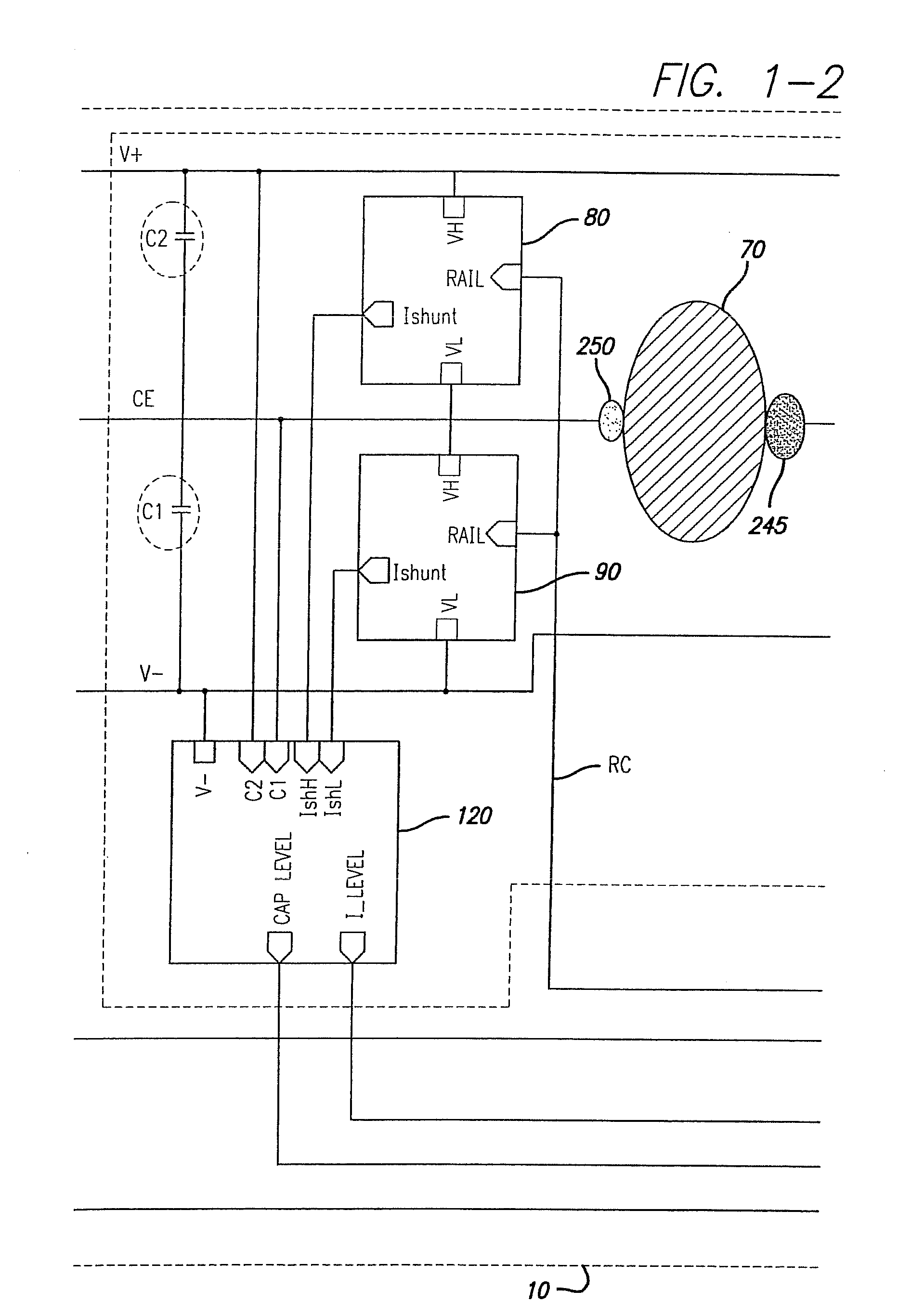Power Scheme for Implant Stimulators on the Human or Animal Body
a technology of implant stimulators and power schemes, which is applied in the field of implant stimulators for humans or animals, can solve the problems of large prosthetic devices, large bulky, and insufficient simulated vision to truly aid the visually impaired, and achieve the effect of reducing power delivering efficiency and reducing the size of the devi
- Summary
- Abstract
- Description
- Claims
- Application Information
AI Technical Summary
Benefits of technology
Problems solved by technology
Method used
Image
Examples
Embodiment Construction
[0034]FIGS. 1-1, 1-2 and 1-3 are a diagram of an implant power control scheme in accordance with an embodiment of the present disclosure.
[0035]A retinal implant 10 receives power from an external unit 20 through an inductive power link 30 coupled through coils. Control and status information are exchanged between retinal implant 10 and external unit 20 through data link 40. While the embodiment of FIGS. 1-1, 1-2, 1-3 and the following figures is concerned with a retinal implant, the person skilled in the art will appreciate that the same scheme can be used also for other types of implants on the human or animal body, such as cochlear implants or implants to restore neuronal functions impaired due to injuries or diseases.
[0036]Power at the implant side is received by implant coil 50. Implant coil 50 is tunable with capacitor C3 to the power carrier frequency. The received AC power is converted into DC power by a rectifier circuit 60. Rectifier circuits are known per se to the person ...
PUM
 Login to View More
Login to View More Abstract
Description
Claims
Application Information
 Login to View More
Login to View More - R&D
- Intellectual Property
- Life Sciences
- Materials
- Tech Scout
- Unparalleled Data Quality
- Higher Quality Content
- 60% Fewer Hallucinations
Browse by: Latest US Patents, China's latest patents, Technical Efficacy Thesaurus, Application Domain, Technology Topic, Popular Technical Reports.
© 2025 PatSnap. All rights reserved.Legal|Privacy policy|Modern Slavery Act Transparency Statement|Sitemap|About US| Contact US: help@patsnap.com



